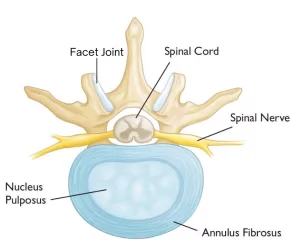
The low back is made up of a complex layering of muscles, ligaments, discs and spinal joints but there are three common causes for low back pain.

Depending on the diagnosis, each lumbar injury rehabilitation various from one another but your physio will focused on restoring full lumbar range of motion. The lumbar spine is able to bend forwards, backwards, rotate and bend side to side. How much you can move varies from person to person but generally you should aim for the following ranges.
Flexion: Able to touch your shins
Extension: Able extend your hips past your toes and shoulders past your heels
Rotation: Able to see your other shoulder in the mirror
Side Bend: Able to slide your hand just past your knee
Once you have achieved full range of motion, the next phase of rehabilitation is to regain your balance and trunk control. Squatting is an important fundamental movement, this means we perform variations of squats throughout our day such as getting up from a chair or having to lift a bag of groceries. Your physio will take you though various progressions from lumbo-pelvic tilts, isolated muscle exercises and squatting. After a low back injury one side of the low back tends to be more affected than the other side, so being able to complete a single leg squat on both legs is a good indication that you’re low back co-ordination has returned.
Low back pain has a higher re-occurrence rate compared to other injuries. Ensuring that you have sufficient strength and control around your trunk is one of the main things you can do to reduce the risk of re-injury. To determine how strong your trunk needs to be, a common test used is the flexor and extensor endurance test. Men will have a flexor extensor ratio closer to 1 while woman’s extensors will be slightly stronger compared to their flexors with a flexor extensor ratio of 0.8. This allows you and your physio to benchmark your strength and see changes overtime. Nobody likes doing physio exercises forever!
People with low back pain can have multiple drivers for their pain, and rehabilitation can differ from one patient to another despite having the same diagnosis. In your rehabilitation you should expect to achieve full range of motion, co-ordination and strength. If you are experiencing low back pain in sport then completing a battery of return to sport testing is important to implement in your rehabilitation. See our sport injury rehab page for more of these tests.
We have experienced senior clinicians with one of the best equipped facilities on Auckland’s North Shore. Our patients have access to a full gym and Pilates studio to allow us to develop an exercise program specific to your needs. Independent gym exercise is an important part of most ACL rehabilitation. At Link Health and Fitness a physiotherapist is always available during staffed hours to offer you additional support.
We are part of several ACC programs, and you may be eligible to receive fully subsidised healthcare for your injury. To find out more don’t hesitate to book online or contact us on 09 5536565.